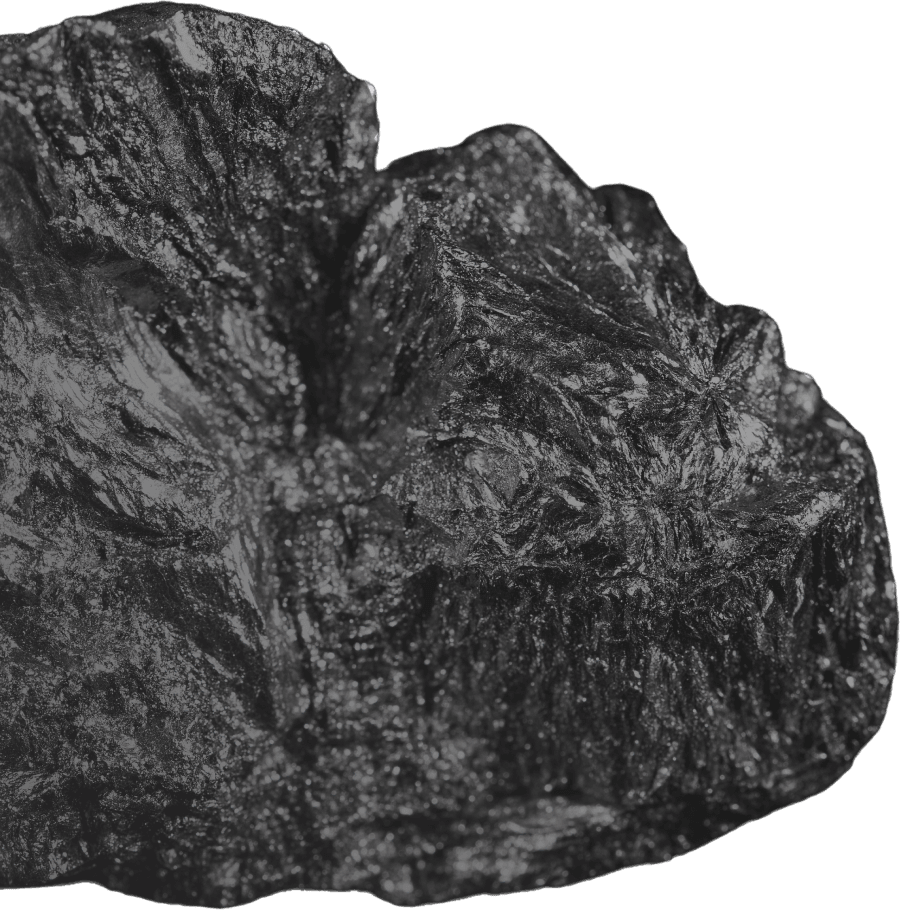From the Core of Your Pencil to Key 21st Century Technologies
Graphite is a form of crystalline carbon that normally occurs as gray to black crystal flakes and masses. It consists of layers of parallel-stacked hexagonal lattice sheets formed by densely arranged carbon atoms. A single layer of these carbon atoms sheets is called graphene. A soft mineral, graphite is flexible, but not elastic. It has a low specific gravity, is chemically inert, highly refractory, thermally stable, and exhibits strong cleavage and lubricity. The U.S. Geological Survey describes it as the the most electrically and thermally conductive of the nonmetals.
All these properties make graphite suitable, and in some cases indispensable, for many industrial and tech applications.
Commercial classification of graphite sources encompasses natural graphite – mined from metamorphic rock such as marble, schist and gneiss; and synthetic graphite – manufactured via high temperature processing of hydrocarbon materials. Depending on the ore’s crystallinity and morphology, as well as grain size, graphite ore is classified as either amorphous (microcrystalline), or crystalline (flake or lump/chip).
The distinct natural morphological characteristics of Graphite One’s graphite mineralization — see the STAX® Advantage — make it an ideal fit for lithium-ion battery and other high-tech uses.
More than 60% of the world’s graphite supply comes from China, where production and processing includes material processed from North Korea and utilizes slave/forced labor with inadequate environmental controls in Xinjiang Province. Meanwhile, the United States currently produces zero graphite and is 100% dependent on foreign imports.

Known to many as the material at the core of our pencils, graphite today finds broad application in traditional and next-gen industrial and technology manufacturing for both the private and defense sectors. Coated Spherical Graphite (CSG) is a key component of the anode in lithium-ion batteries, including EV batteries, and energy storage systems, both of which are major growth markets in the green energy transition. While currently considered niche, breakthroughs in graphene R&D in the context of the advanced materials science revolution may soon open the door to other use cases for graphite.
High purity Coated Spherical Graphite (CSG), continues to be the dominant anode material for lithium-ion batteries, including for EV and energy storage systems, due to its high energy, power density and structural stability. The accelerating adoption of EV technology and energy storage is driving demand to unprecedented heights.
Graphite is indispensable for a range of refractory and foundry applications, in high temperature lubricants and high-strength lightweight composite materials, and is widely used to increase carbon content in the steel making process.
Test work indicates that Graphite One’s STAX® graphite can be processed into industrial diamonds for semiconductor substrates and a range of applications in 5G network cell towers.
Graphite’s superior conductivity lends itself to usage in next-gen fuel cells. Meanwhile, fire retardant foams using STAX® purified, expandable graphite have been found capable of extinguishing Class B fires, which are among the most difficult to extinguish. With the materials science revolution yielding breakthrough after breakthrough, other next-gen uses are only a headline away.
Creating Vertically-Integrated Solutions for the Materials Supply Chain Essential to Technology Manufacturing, the Renewable Energy Transition, and National Security
The accelerated adoption of lithium-ion EV battery technology and energy storage systems is driving demand scenarios for graphite to unprecedented heights. Meanwhile, graphite remains a staple for the technology manufacturing sector, with increased and new applications in electric arc furnaces, fire suppressants, nuclear engineering and semiconductors further fueling demand. Against the backdrop of the U.S. Department of Defense (DoD) projecting an 83,000 tonnes shortfall for graphite in classified conflict scenarios, and a current 100% U.S. import reliance for graphite, the Graphite One Project could become a key link in the materials supply chain essential to the technology manufacturing sector, renewable energy, and national security and defense applications.”


With its vertically-integrated approach from mine to material manufacturing, Graphite One’s intent is to produce high-grade anode material for the lithium-ion Electric Vehicle battery market and Energy Storage Systems, with significant additional production for a range of value-added graphite applications.
Mr. Robert M. Retherford and Senior Geologist of Alaska Earth Sciences Inc., has reviewed and verified the scientific and technical information contained in this website. Unless otherwise indicated, Mr. Retherford is a Qualified Person within the meaning of National Instrument 43-101 – Standards of Disclosure for Mineral Projects (“NI 43-101”) and an independent consultant to Graphite One Inc. For details of the Graphite One Project, including the quality assurance programs and quality control measures applied and key assumptions, parameters and methods used to estimate the mineral resource set forth in this website for the Company’s Project, please refer to the NI 43-101 Technical Report entitled Graphite Creek Project Ni-43-101 Technical Report and Feasibility Study, prepared for Graphite One Inc. by Barr Engineering Co. with an effective date of March 25, 2025, and available on the Company’s profile at sedarplus.ca.

The Graphite One Project is envisioned to be an owner-operated year-round truck and shovel operation situated on the Seward Peninsula in Alaska, which would mine 4 million tonnes of material each year. Of these, about 1 million tonnes with an average graphite mineralization grade of 7% Cg (“contained graphite”) would be delivered to the Processing Plant adjacent to the mine.

On an annual basis, the Mineral Processing Plant would reduce 1,018,000 tonnes of graphite mineralization to 60,000 tonnes of graphite concentrate at 95% Cg. The dried concentrate would be packaged and transported to the Port of Nome, Alaska, and shipped on a seasonal schedule to the Manufacturing Plant.

The Product Manufacturing Plant would pelletize and thermally purify the material to at least 99.95%Cg, before the majority of it would be air-milled, turned into spheroid-shaped particles, and coated and graphitized.

Graphite One’s process would deliver 41,850 tonnes of battery grade CSG per year for end-uses in EV and lithium-ion batteries as well as Energy Storage Systems, with the remaining advanced graphite material – projected at 13,500 tonnes per year – feeding a range of industrial and tech manufacturing supply chains.
Graphite One’s graphite mineralization has been discovered to be distinct from other known graphite materials as it exhibits naturally the morphological characteristics of an already-processed material.
To highlight these unique properties, the company has branded Graphite Creek graphite by the acronym “STAX®”:
“S”, as in Spheroidal;
“T”, as in Thin;
“A”, as in Aggregate; and,
“X” as in Expanded.
The company has registered the trademark “STAX ®” in the United States and Canada.
STAX®’s semi-spheroidal shape could result in a high-yield, more efficient process to produce the Coated Spherical Graphite required for Li-Ion and EV Batteries.




